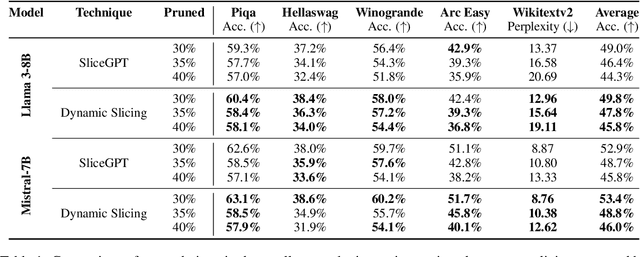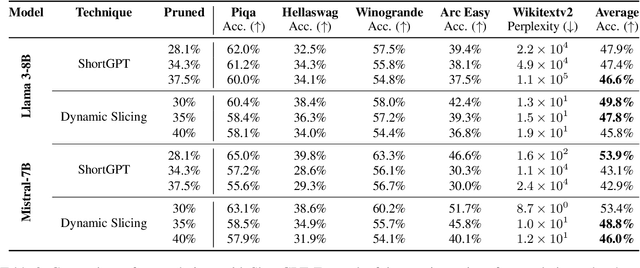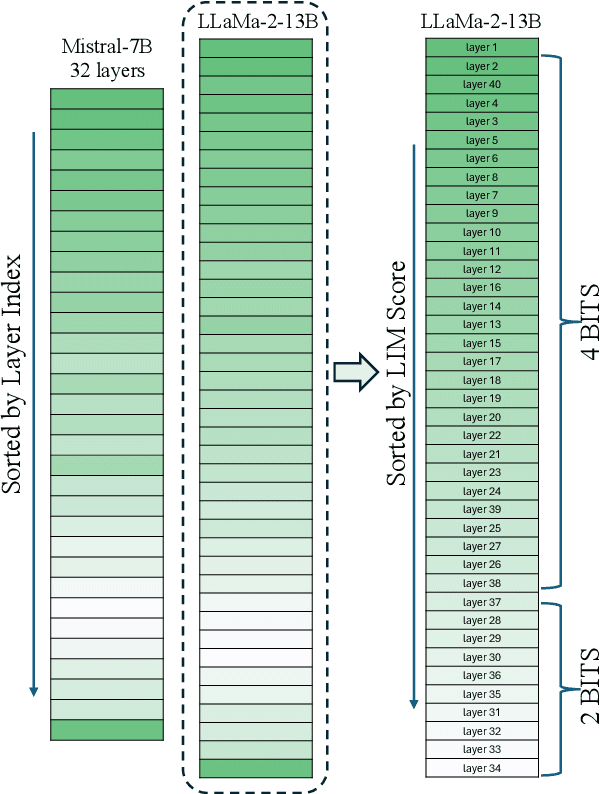Paul-Ioan Clotan
Change Is the Only Constant: Dynamic LLM Slicing based on Layer Redundancy
Nov 05, 2024



Abstract:This paper introduces a novel model compression approach through dynamic layer-specific pruning in Large Language Models (LLMs), enhancing the traditional methodology established by SliceGPT. By transitioning from constant to dynamic slicing, our method leverages the newly proposed Layer Redundancy (LR) score, which assesses how much change each layer changes its input by measuring the cosine similarity of the input to the output of the layer. We use this score to prune parts of individual layers based on redundancy in such a way that the average pruned percentage for all layers is a fixed value. We conducted extensive experiments using models like Llama3-8B and Mistral-7B on multiple datasets, evaluating different slicing bases and percentages to determine optimal configurations that balance efficiency and performance. Our findings show that our dynamic slicing approach not only maintains but, in many cases, enhances model performance compared to the baseline established by constant slicing methods. For instance, in several settings, we see performance improvements of up to 5% over the SliceGPT baseline. Additionally, a perplexity decrease by as much as 7% was observed across multiple benchmarks, validating the effectiveness of our method. The code, model weights, and datasets are open-sourced at https://github.com/RazvanDu/DynamicSlicing.
Layer-Wise Quantization: A Pragmatic and Effective Method for Quantizing LLMs Beyond Integer Bit-Levels
Jun 26, 2024



Abstract:We present a simple variable quantization approach that quantizes different layers of a large language model (LLM) at different bit levels. Specifically, we quantize the most important layers to higher bit precision and less important layers to lower bits to achieve floating point quantization levels. We propose two effective strategies to measure the importance of layers within LLMs: the first measures the importance of a layer based on how different its output embeddings are from the input embeddings (the higher the better); the second estimates the importance of a layer using the number of layer weights that are much larger than average (the smaller the better). We show that quantizing different layers at varying bits according to our importance scores results in minimal performance drop with a far more compressed model size. Finally, we present several practical key takeaways from our variable layer-wise quantization experiments: (a) LLM performance under variable quantization remains close to the original model until 25-50% of layers are moved in lower quantization using our proposed ordering but only until 5-10% if moved using no specific ordering; (b) Quantizing LLMs to lower bits performs substantially better than pruning unless extreme quantization (2-bit) is used; and (c) Layer-wise quantization to lower bits works better in the case of larger LLMs with more layers compared to smaller LLMs with fewer layers. The code used to run the experiments is available at: https://github.com/RazvanDu/LayerwiseQuant.
 Add to Chrome
Add to Chrome Add to Firefox
Add to Firefox Add to Edge
Add to Edge